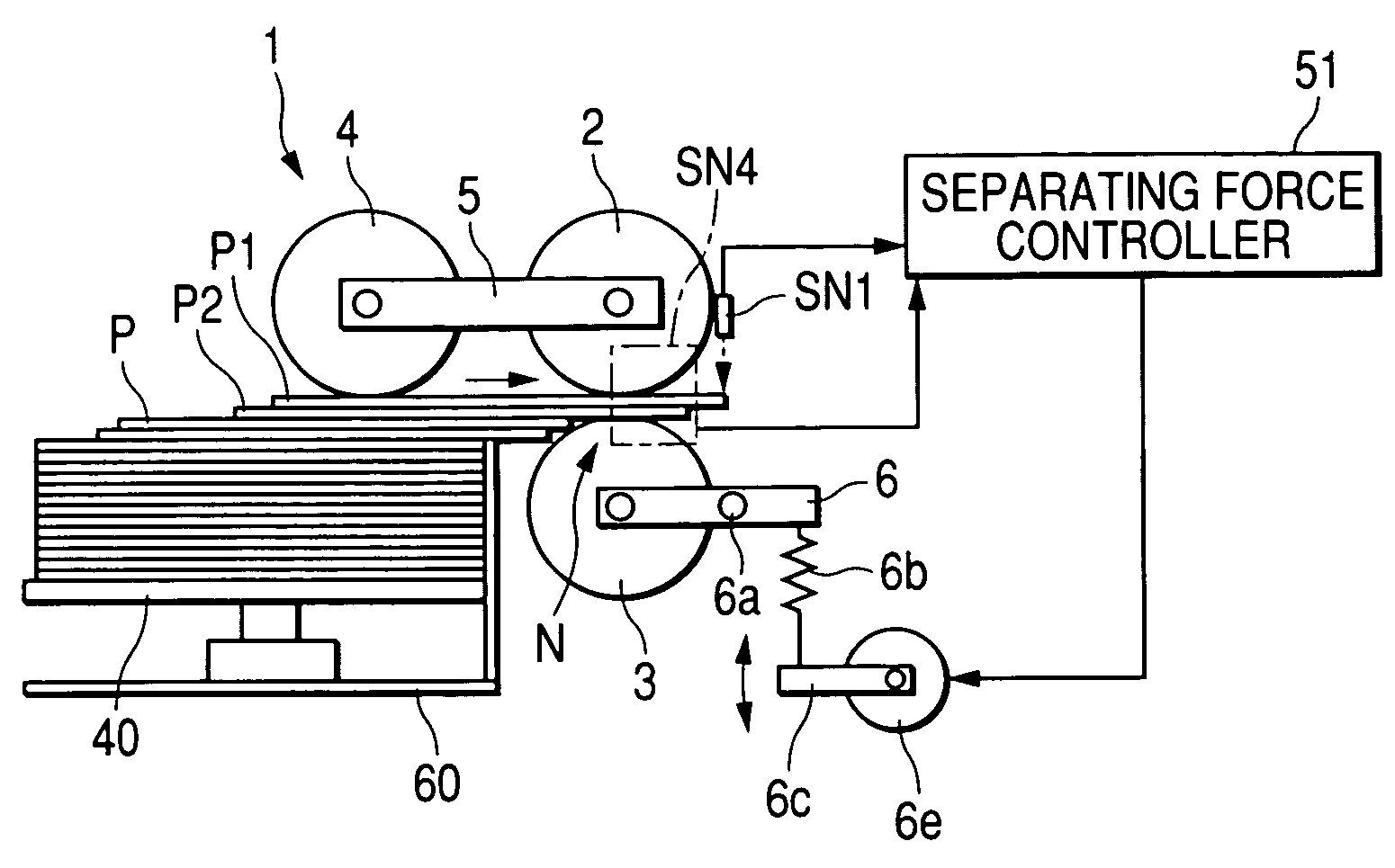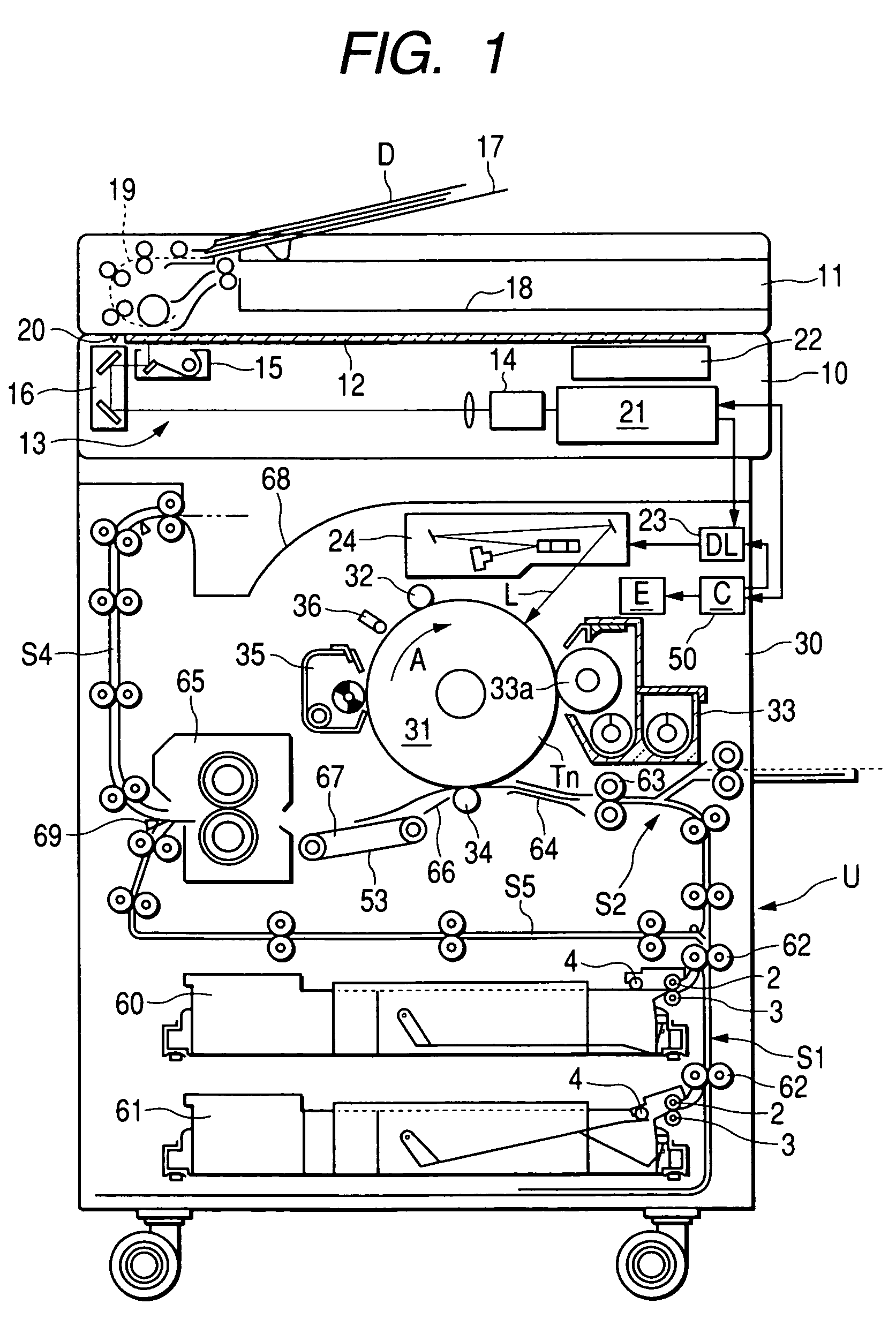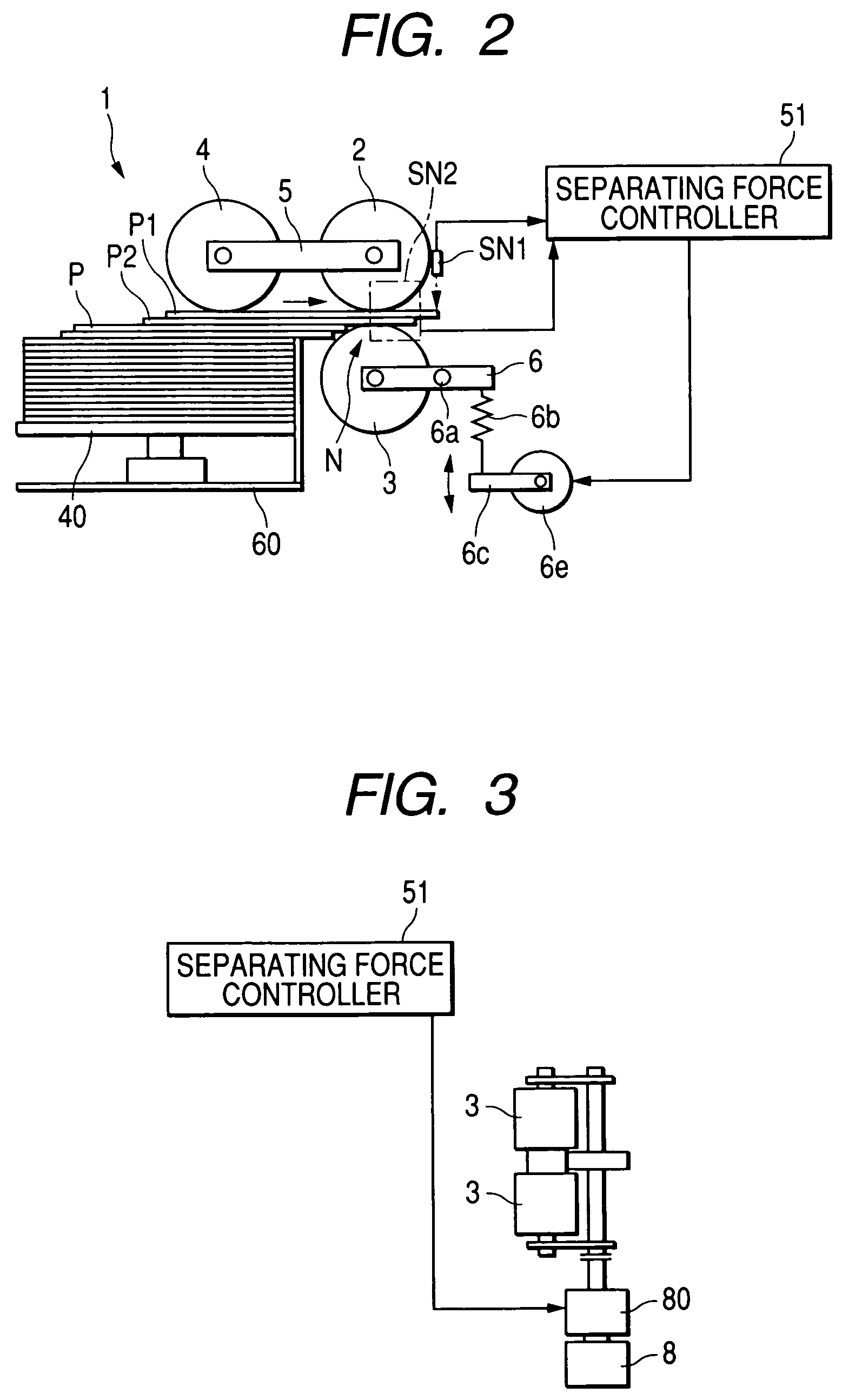Sheet feeding apparatus
a technology of feeding apparatus and record sheet, which is applied in the direction of transportation and packaging, article separation, thin material processing, etc., can solve the problem of double feeding of the second record sheet, and achieve the effect of stabilizing the operation of feeding the record sheet and alleviating the load
- Summary
- Abstract
- Description
- Claims
- Application Information
AI Technical Summary
Benefits of technology
Problems solved by technology
Method used
Image
Examples
first embodiment
[0075]A first embodiment of the invention will be explained as follows.
[0076]According to the first embodiment, there is arranged a double feeding degree detecting sensor SN 2 for detecting whether a second record sheet P2 is doubly fed to the nip portion N by being overlapped with a first record sheet P1 to be transported between the nip portion N and a detecting position of the sheet sensor SN 1. As shown in FIG. 4, the double feeding degree detecting sensor SN 2 is configured by a base member 52 brought into contact with a surface of the first record sheet P1 on a downstream side of the feeding roller 2 in a direction of feeding the record sheet P, a pivotable detecting arm 53 a front end of which is urged to the base member 52, and an encoder (not illustrated) for detecting a pivoting angle of the detecting arm. The detecting arm 53 is pivotably supported by a supporting shaft 54, and in a state in which the record sheet P does not pass the nip portion N, the front end of the de...
second embodiment
[0105]A second embodiment of the invention will be explained as follows.
[0106]The second embodiment of the invention is configured such that a rotary encoder 3a is attached to the rotating shaft of the separating roller 3, and a speed operator 3b inputs an output signal of the rotary encoder 3a to detect the rotational speed of the separating roller 3. In the case in which in drawing out the record sheet P at inside of the feeding tray 60 by rotating the pickup roller 4 to transport to the nip portion N, the second record sheet P2 is also entered the nip portion by being dragged by the topmost record sheet (first record sheet) P1, when the second record sheet P2 is made to advance by being dragged by the first record sheet P1 at the nip portion N, the separating roller 3 is rotated in coincidence with advancement of the second record sheet P2. Therefore, when the rotational speed of the separating roller 3 is detected in this way, an advancing speed of the second record sheet P2 ove...
PUM
 Login to View More
Login to View More Abstract
Description
Claims
Application Information
 Login to View More
Login to View More - R&D
- Intellectual Property
- Life Sciences
- Materials
- Tech Scout
- Unparalleled Data Quality
- Higher Quality Content
- 60% Fewer Hallucinations
Browse by: Latest US Patents, China's latest patents, Technical Efficacy Thesaurus, Application Domain, Technology Topic, Popular Technical Reports.
© 2025 PatSnap. All rights reserved.Legal|Privacy policy|Modern Slavery Act Transparency Statement|Sitemap|About US| Contact US: help@patsnap.com



